SAN ANTONIO (Day 4 - part 6)
We continued on to mission #3 on our quest... Mission Espada or Mission San Francisco de la Espada (Mission St. Francis of the Sword).
Mission Espada was founded as Mission San Francisco de los Texas in 1690 in East Texas. It served as buffer against French encroachment from Louisiana. This is the last of the three brought here in 1731 and is located at the southern end of the San Antonio mission chain. The aqueduct and acequias were constructed first (between 1731 and 1745) with the permanent stone structures of a granary and parts of the church following afterwards.
The first decade was difficult for the mission. Due to the constant Apache raids, all of the approximately 230 Native American residents (including the Archahomos, Malahuitos, Pacaos and Tacames) abandoned the complex In 1737. Eventually some returned only to be hit by a smallpox epidemic in 1739. Fortunately things began to stabilize in the 1740s and construction could begin. At its peak in the 1770s, there was a church, convento, workshops, storage facilities, Indian quarters and a protective wall. In 1790, master mason Antonio Salazar constructed the espadana (bell gable) on top of the church.
The mission was partially secularized in 1794 and its land given to the remaining Indian residents and the growing number of Spanish homesteaders. After it was fully secularized in 1824, it was the site of a battle during the Texas Revolution. It was then virtually abandoned until the arrival of Franciscan Father Francis Bouche in 1858. He worked to improve the old mission buildings. Large-scale preservation efforts finally arrived with the New Deal era of the 1930s. Efforts continued into the 1950s when the wall lines were delineated and the convento was reconstructed on its original foundation. Much of the complex remains partially in ruins.


A map of the current grounds (click for a larger view)

An illustration of back in the day (click for a larger view). The blue structures were added after the mission days.
This was the only local mission here bricks and tiles were made. In 1772, the kilns had fired some 10,000 bricks. 18th-century bricks (called ladrillos) were thinner and wider of those today and more closely resembled those of Roman bricks brought into Spain over 2,000 years ago.
While the friars were European, the master craftsmen from Mexico were mestizos (part European, part Native American). They blended Mesoamerican building traditions with those of the Mediterranean.

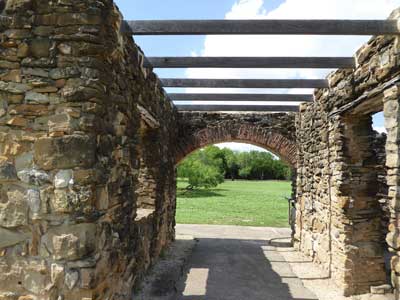



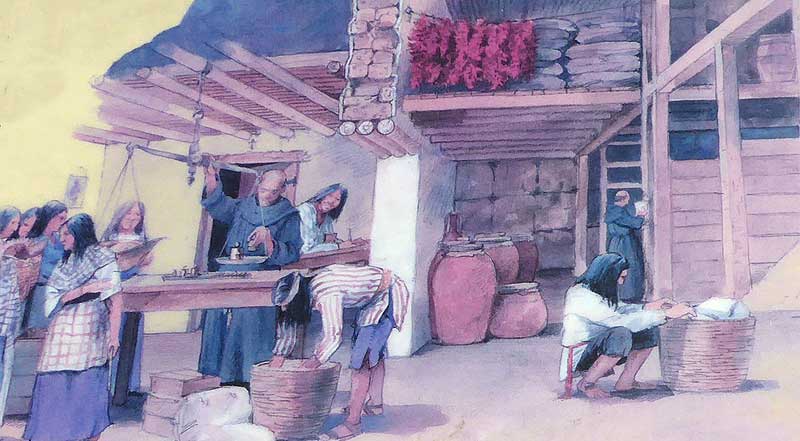
Items were safely stored in the granary, the largest stone building in the complex. Every individual and family were given measured rations of corn.
The church area...
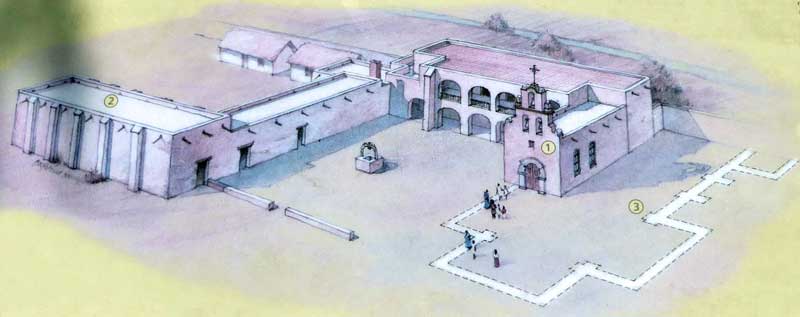
Click for a larger view
1 - Originally this building was meant to be just a sacristy, where the priest prepares for Mass. By the 19th century, it had fallen into disrepair. It was reconstructed by Father Francis Bouche (the French parish priest) who made some changes, but the facade with its door is still originally.
2 - This was first a granary, then used as the church from 1773-76.
3 - The foundations for a big church were made in 1742, however, everything came to a grinding halt when the master mason left. Eventually both a shortage of workers and materials led to the abandonment of the project.
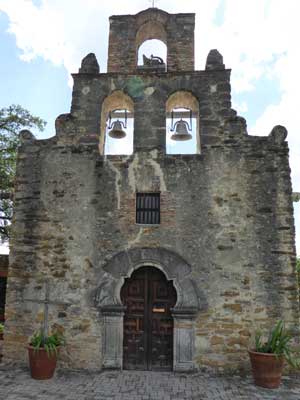
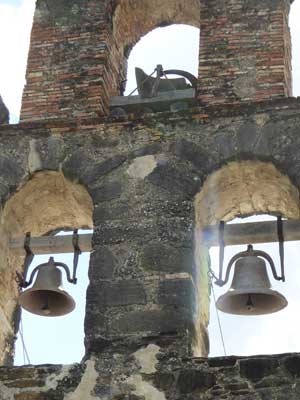
The front, nonstructural wall contained three bells.


The interesting front door ... St. Francis with some critter friends
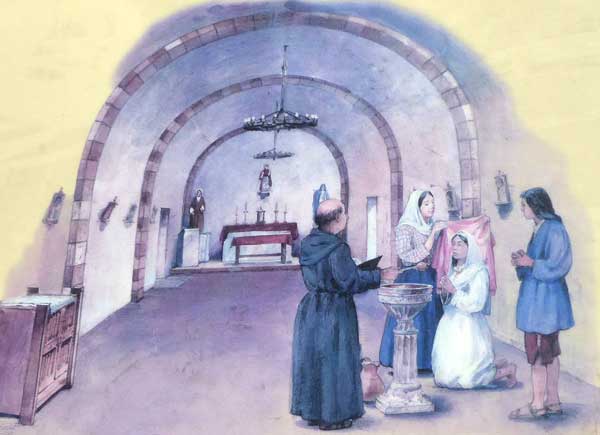
An illustration of a baptism taking place inside the church
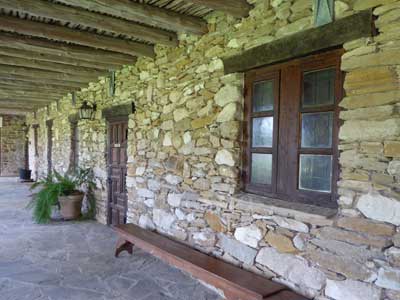

Walls of the convento ... and a well in the old church courtyard
We arrived at our last (but not least!) mission... Mission Concepcion or Mission Nuestra Senora de la Purísma Concepcion de Acuna (Our Lady of the Immaculate Conception).
Similar to the others, the mission was established in East Texas in 1716 and moved here in 1731. The church took about 20 years to build and was completed in 1755.
Initially, approximately 300 Native Americans lived here. Regular attacks and disease took large tolls. It's recorded that in 1762, 792 Native Americans were baptized and 596 were buried. By 1782, there were only 77 left residing here. The mission was secularized in 1794 and its land was divided among the remaining 38 converted individuals.
The mission compound quickly fell into a state of disrepair. In 1854, cattle were being housed in the church. Small restorations began in 1861, with preservation efforts continuing as the mission became part of the National Park in 1978. While most of the grounds are gone, the church is the best preserved and least altered. Most of the wall decoration is original.
return • continue